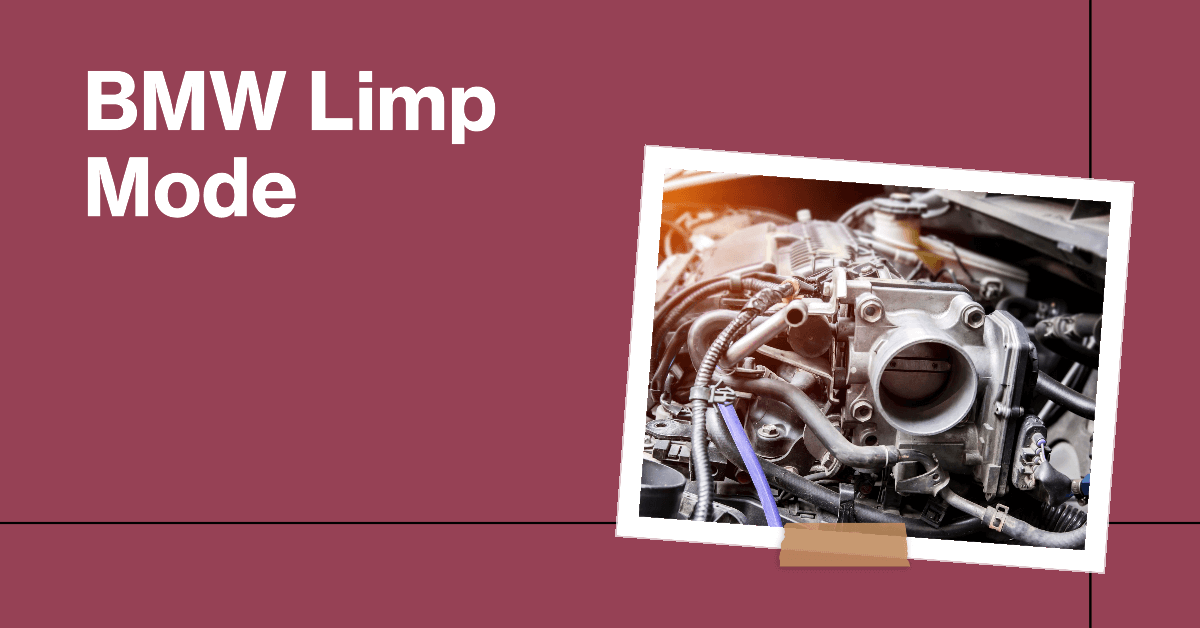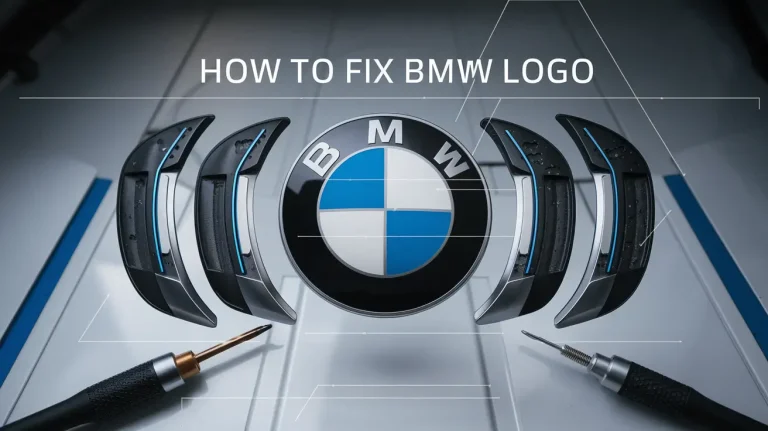What is BMW Limp Mode and How to Get Your Vehicle Out of It?
Have you ever felt like your BMW wasn’t performing as expected on the road? Maybe the engine started making unusual noises or the car shifted gears awkwardly. There’s a good chance your BMW went into limp mode.
Limp mode, sometimes referred to as “limp home mode,” allows your BMW to operate with limited functionality so you can drive it to a repair shop. This built-in safety feature aims to prevent further damage to the engine and transmission when a fault is detected.
While you may be able to nurse your BMW to the mechanic in limp mode, it’s not something you want to ignore for long. Let’s take a closer look at the signs of BMW limp mode, what causes it, and most importantly, how to get out of it quickly.
Recognizing the Symptoms of Limp Mode in a BMW
Your BMW computer uses sensors throughout the engine and transmission to monitor performance. If any sensor reports values outside the normal range, it triggers limp mode automatically.
Here are some of the most common signs your BMW has gone into limp mode:
- Reduced engine power – Your car will feel significantly slower and struggle to accelerate. This happens because limp mode limits RPMs.
- Engine RPM limited to 3,000 or under – Limp mode reduces the maximum RPMs your engine can reach to reduce strain.
- Stuck in lower gears – Limp mode will prevent your automatic transmission from shifting into higher gears despite speed and RPMs.
- Check Engine Light illumination – A fault code that activated limp mode also triggers the Check Engine Light.
Limp mode essentially strips your BMW down to the essential functions so you can drive slowly to be serviced. All performance and non-vital electronic features are reduced or shut off completely.
What Causes Limp Mode in BMWs?
BMW limp mode has a range of possible underlying causes. Here are some of the most common:
- Transmission problems like clutch and gear damage can confuse sensors and activate limp mode.
- Short circuits or damaged wiring that connect various engine and transmission sensors. This can lead to the computer receiving anomalous readings.
- Low fluid levels – Issues like low engine coolant, brake fluid, or transmission fluid can all trigger limp mode.
- Leaking fluids like engine oil, coolant, brake fluid or battery acid trips various leak detectors and warning sensors.
- Errors in the electronic throttle control or boost deviation regulation caused by a malfunctioning turbocharger, MAP sensor, etc. This affects engine performance readings.
- Faulty crankshaft and camshaft sensors reporting incorrect piston positioning and engine speed to the computer.
Problems in sensors, actuators, wiring or computer chips themselves can also put a BMW into limp mode with various symptoms. Without repairing the underlying condition that caused limp mode, the fault may keep triggering over and over.
How to Get a BMW Out of Limp Mode Safely
Once you recognize the symptoms of BMW limp mode, getting your vehicle into service should become your top priority. However, you may need to override or bypass limp mode first in order to safely drive it there.
Here are some safe methods to get out of limp mode in a pinch:
- Pull over and shut off the engine – Wait a few minutes and restart the car. Limp mode may disengage long enough to drive to a repair shop after a reset.
- Check and top off fluids – Low brake fluid, coolant or transmission fluid levels can activate limp mode. Topping them off may clear the warning if that was the cause.
- Disconnect and reconnect battery cables – This may fully reset all systems and override limp mode temporarily.
- Clear Check Engine warning light – Use an OBD2 scanner tool to clear any warning lights and diagnostic trouble codes. This may get your BMW out of safety mode long enough to drive for repairs.
Keep in mind that bypassing limp mode is not fixing the problem causing it. Depending on the underlying fault, ignoring BMW limp mode warnings could lead to complete transmission failure or catastrophic engine damage. Exercise extreme caution overriding this safety feature.
Fixing BMW Limp Mode for Good
The only way to permanently stop limp mode from triggering over and over is to diagnose and repair the underlying mechanical or electrical issue. Warning lights and OBD2 codes should guide you and your BMW mechanic to the problem system and component.
Potential fixes for some common BMW limp mode causes include:
- Wiring repairs – Faulty wiring to sensors, actuators or control units may need splicing or full replacement.
- Computer resets – Clearing error codes from BMW control module computers may resolve some issues.
- Fluid leaks – Fixing leaks from gaskets, seals, hoses, etc. and topping off fluids.
- Clutch/transmission repairs – Significant problems may require transmission removal and rebuild or replacement.
- Turbocharger replacement – Faulty turbo performance can put a BMW into limp mode.
In most cases, the cost to properly repair BMW limp mode ranges from $100 to $200 on average. However, extensive transmission problems can cost over $1000+ to fix in some cases.
Investing in a full diagnosis and repair as soon as possible reduces the likelihood of permanent damage that may otherwise lead to a full engine or transmission replacement.
Take Action Before BMW Limp Mode Leads to Bigger Issues
Dealing with a reduced-power vehicle may be frustrating, but BMW limp mode is actually on your side. This safety feature could save you thousands by forcing you to address problems early before they require an engine overhaul or new transmission.
Pay close attention for early symptoms of BMW limp mode like:
- Diminished acceleration and power
- Engine RPMs restricted to 3000 or below
- Getting stuck in lower gears
- Check Engine Light or “Transmission Fault” errors
Schedule BMW service at the first sign of trouble and mention the possibility of limp mode. Taking fast action lets you maximize your chance of a quick and affordable repair. Catching the issue early could prevent a breakdown en route and save you the cost of towing or complex diagnostics.
With proactive checks and timely repairs, BMW limp mode can help you safeguard the health of your engine and transmission for years of smooth reliable driving. Monitor warning signs closely since limp mode only activates when critical faults are detected. Treat it as your BMW’s call for tender loving care!







